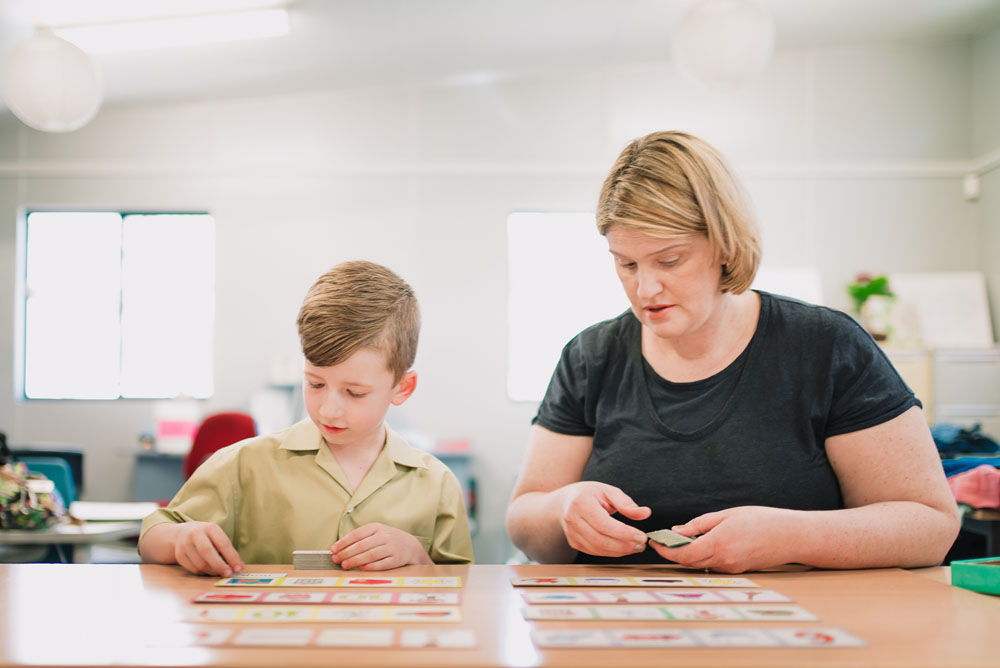Universal Screening for Literacy
Is there a gap in your K-3 data?
Universal Screening is a battery of assessments given to all students in order to develop a profile of strengths and weaknesses. It can then be re administered either each term or mid year and end of year in order to monitor progress. This approach fits within a response to intervention model of student support. There are many times that a student will appear to be tracking at an appropriate rate but then begin to plateau and without ongoing progress monitoring that builds on the previous data these students can sit below the radar.
The good news for schools is that there is an increasing range of Universal Screening options that can be accessed for FREE
In a K-6 context your universal screening assessment would be capturing data on the following information [Acadience Reading [formerly DIBELS Next] | DIBELS 8]
Phonemic Awareness
- First Sound Fluency [Acadience Only] | Phoneme Segmentation Fluency
Alphabetic Principle & Basic Phonics
- Nonsense Word Fluency – Correct Letter Sounds | Whole Words Read
Advanced Phonics & Word Attack Skills
- Oral Reading Fluency – Accuracy
Accurate & Fluency Reading of Connected Text
- Oral Reading Fluency – Correct Words per Minute | Accuracy
Reading Comprehension
- Maze | Oral Reading Fluency – Correct Words per minute + Retell Total [Grade 3 – 6]
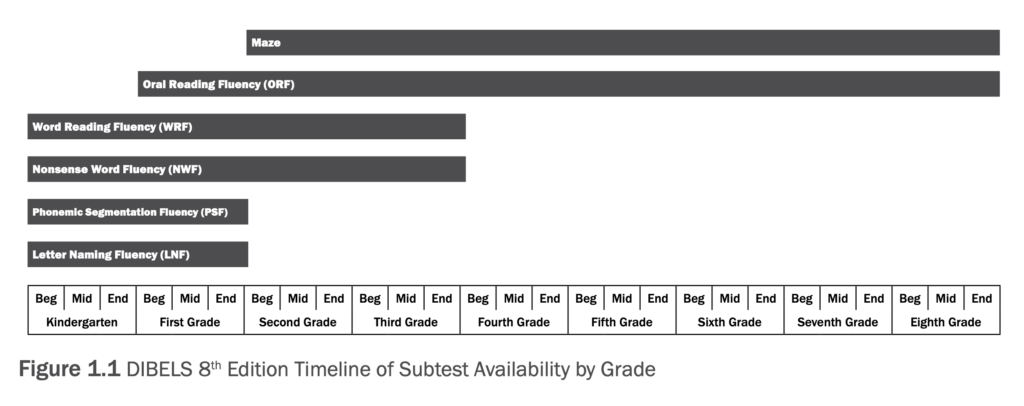
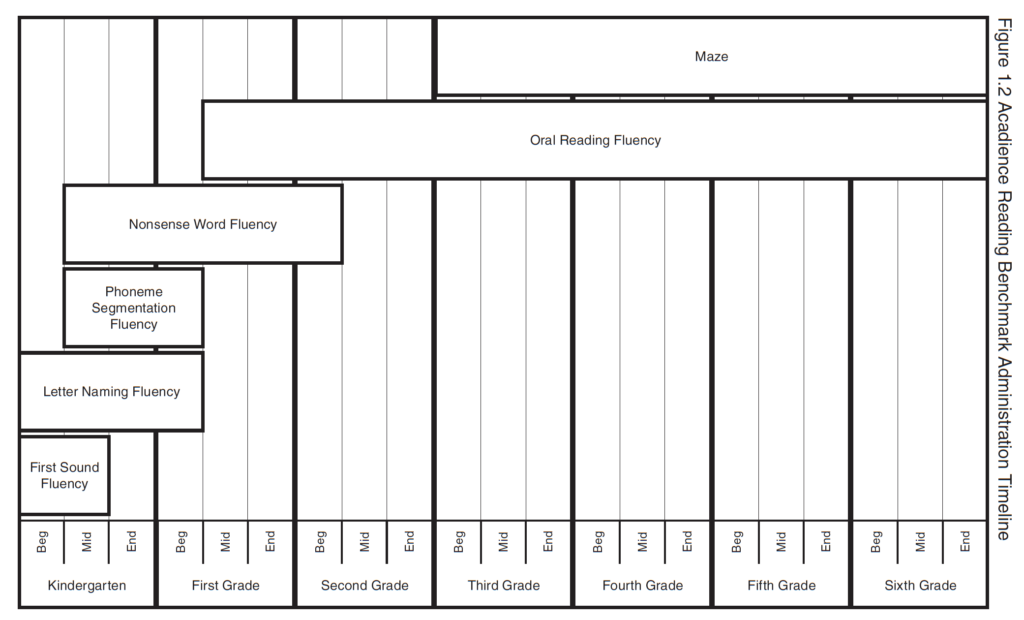
Administration of these assessments means that you are tracking progress along the Word Decoding Component of Scarborough’s Reading Rope but not comprehensively screening nor progress monitoring along the Language Comprehension Component until students are in Year 3. Given that the new NSW English Syllabus K-2 [2021] includes new outcomes for Oral Language and Vocabulary, and that oral language begins to develop at birth and continues to develop into late adolescence | young adulthood, it would make sense to add a universal screening tool for Oral Language that could be used for K-3.
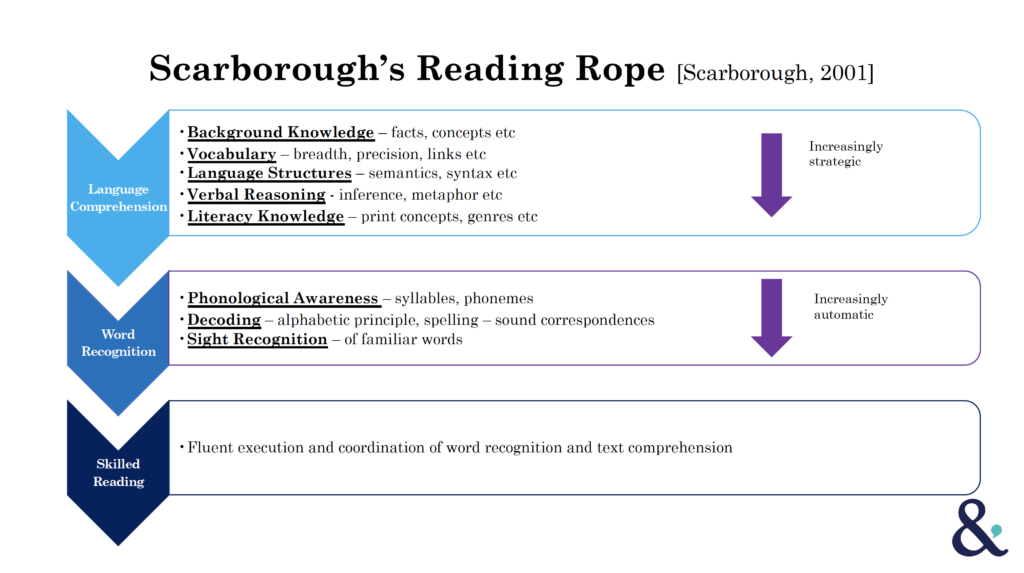
The best option available for Universal Screening within a school setting is the CUBED Narrative Language Measures. If your universal screening tool for reading can be used K-6 [ie. Acadience or DIBELS] you could easily add the CUBED Narrative Language Measure. This tool aligns very nicely to the new Oral Language & Vocabulary Outcomes in the syllabus & also aligns to the Story Champs Language Intervention Curriculum, a useful small group intervention option that could be easily implemented in a school setting.
For K-3 the NLM Listening [a universal screening battery of Oral Language] measures
Listening Comprehension
- measured through story retells as well as questions about the story
Expressive Language
- Using the optional personal generation section, expressive language can be elicited, transcribed and analysed
Inferential Word Learning
- Definitional vocabulary questions reflect students’ ability to determine the meaning of words through context
In summary, because listening and reading comprehension are the same construct, the NLM Listening measures reading comprehension before students can decode!
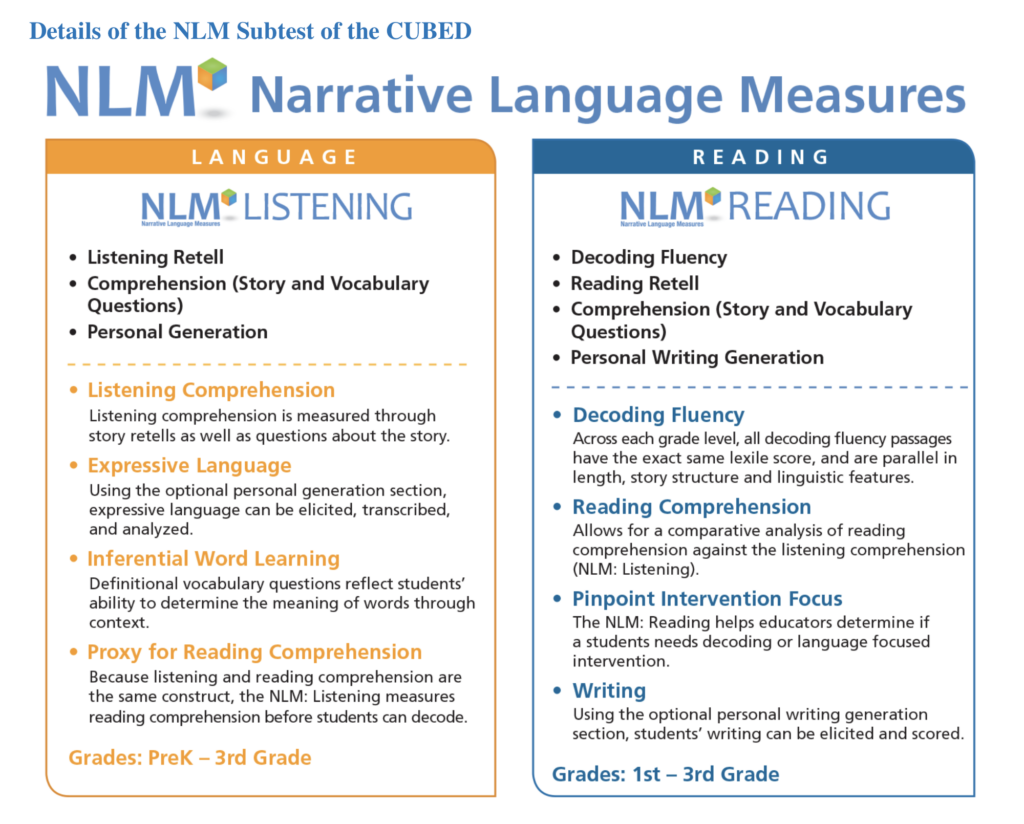
If you’d like to do a deep dive into understanding and implementing the new Oral Language Outcomes in the new NSW English Syllabus, join my mailing list and I’ll be in touch with course dates for later in Term 1.
You can also join my Facebook Group Language and Learning: Training & Support where you can find a range of resources and a platform to ask questions and network.
Should you wish to explore customised courses or coaching options for your School Leadership Team, Teaching or Aid Staff or your Clinical Team please reach out via my website to discuss your needs.
I’m also super excited to share my FREE progress monitoring spreadsheet for tracking student progress against the new Oral Language and Communication Outcomes for K-2. The tool provides a whole class tracking resource and an individual student profile template which is customised to both the Early Stage 1 and Stage 1 Outcomes of the new NSW K-2 English Syllabus. You can download your copy below

